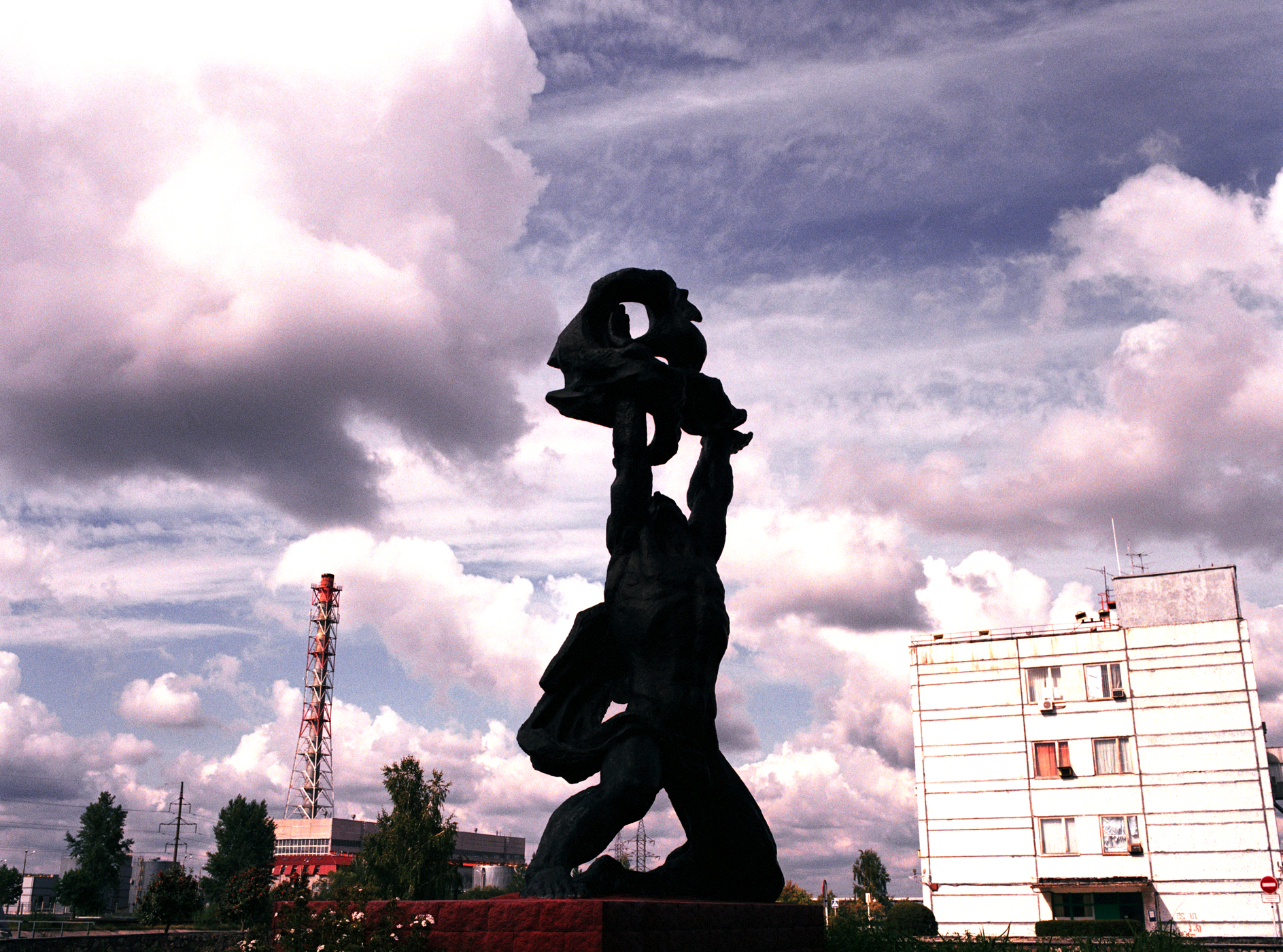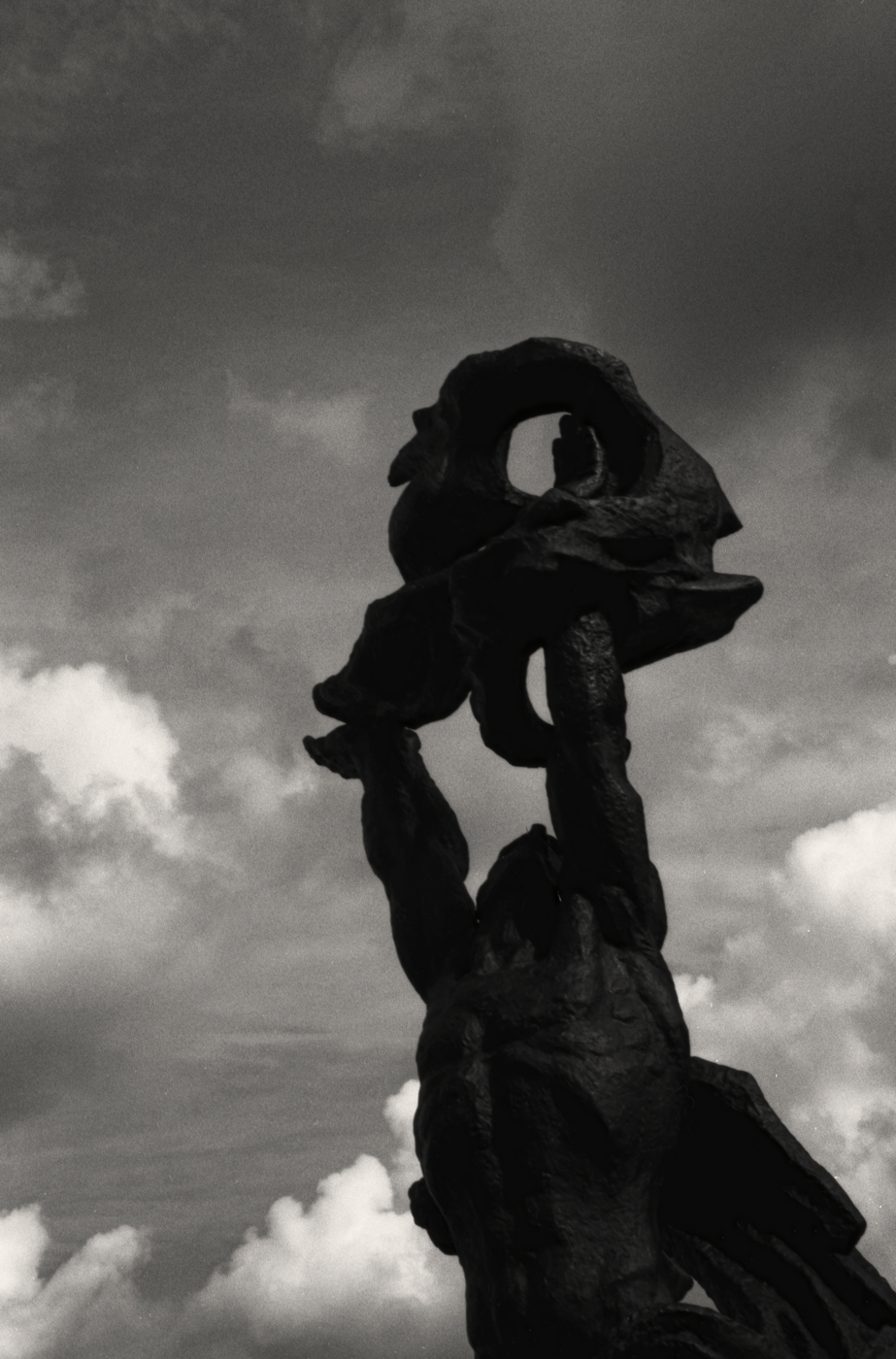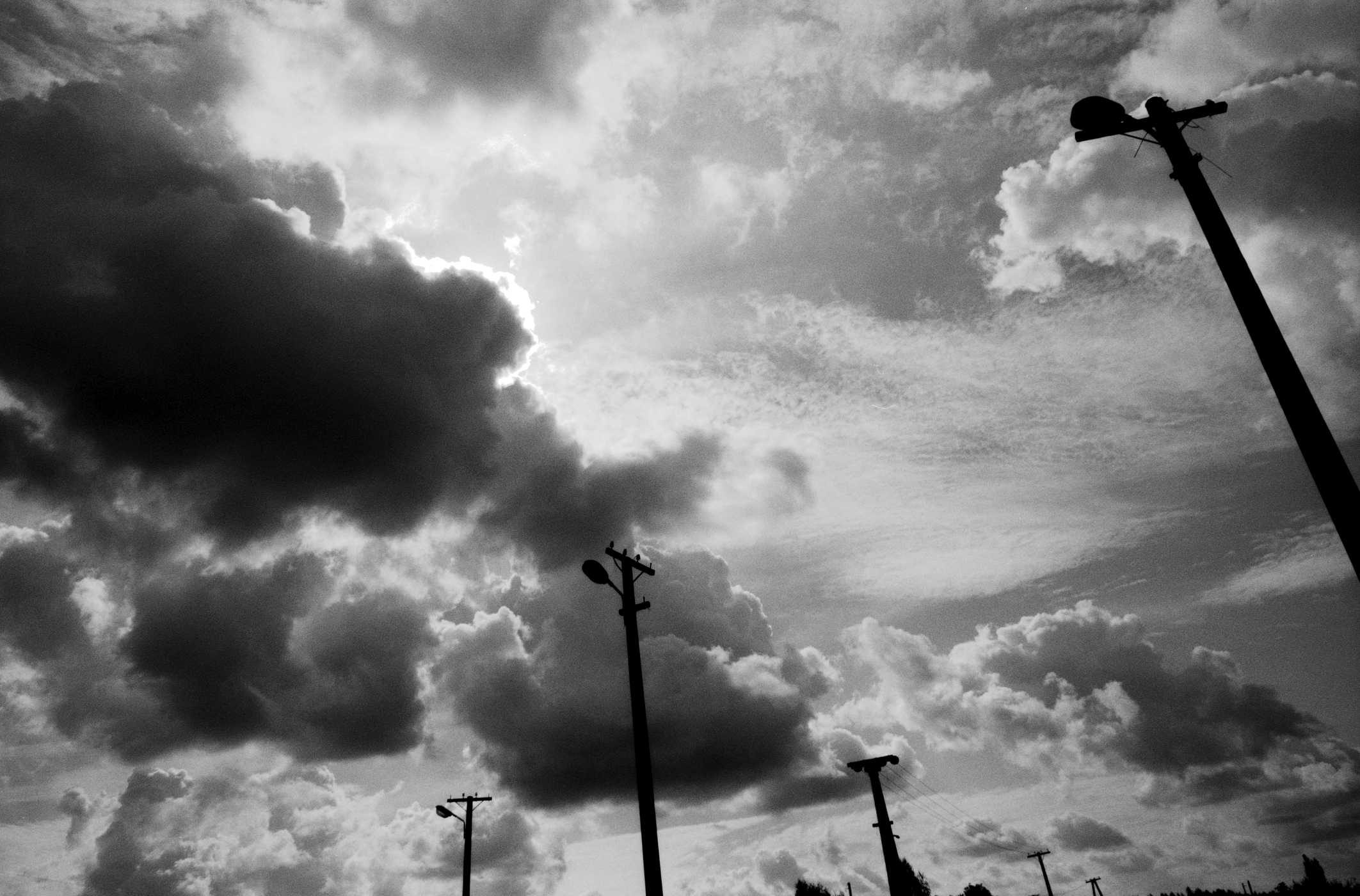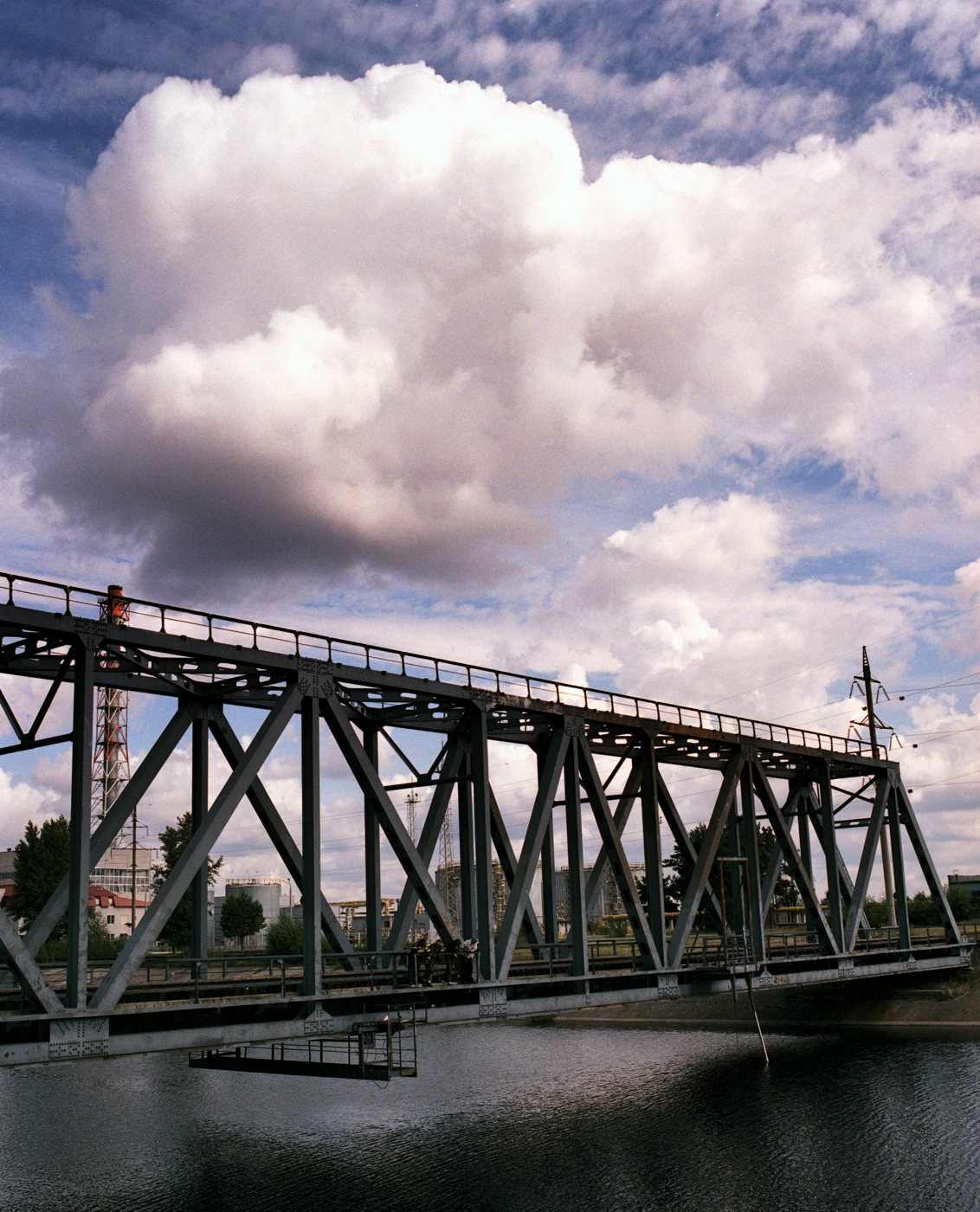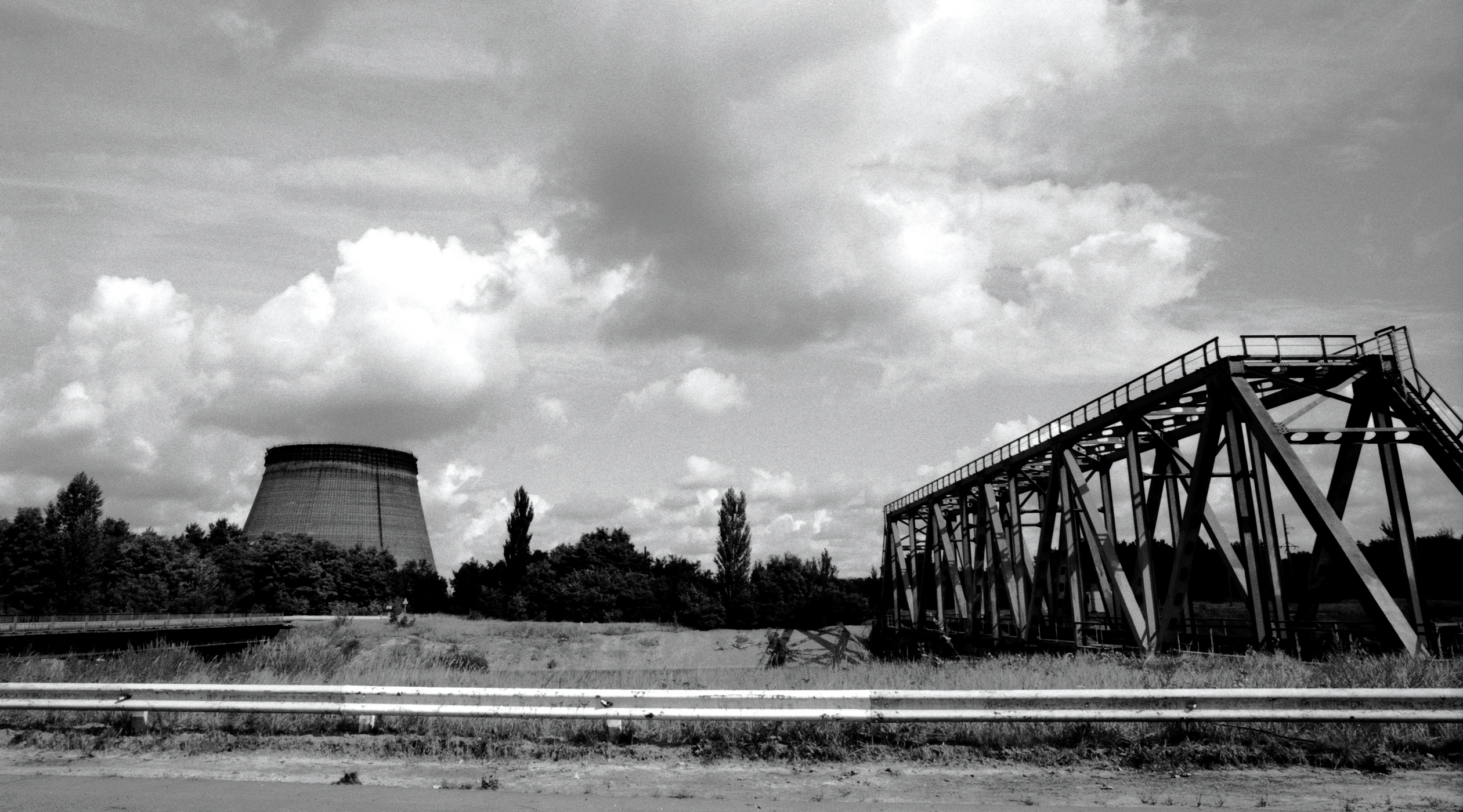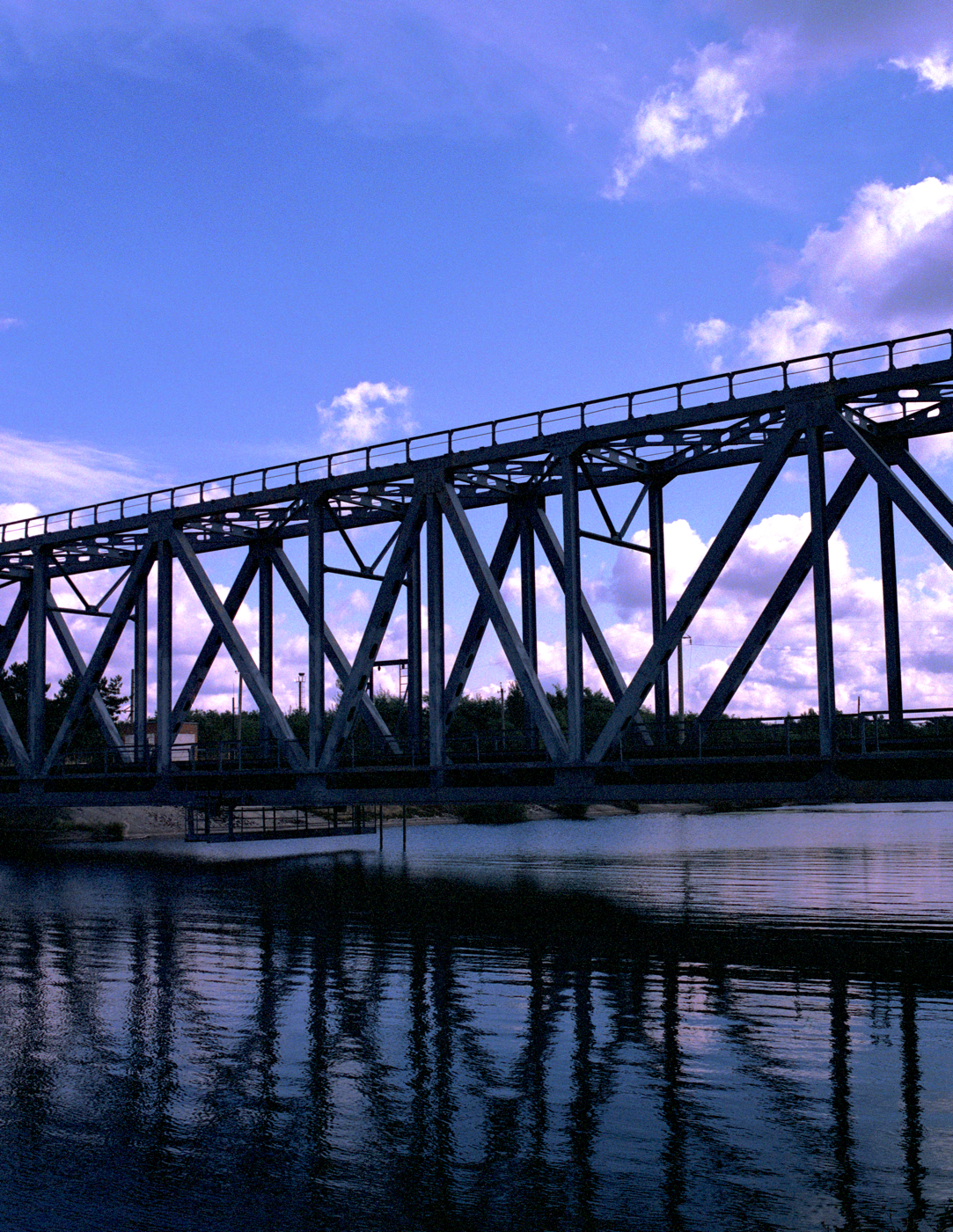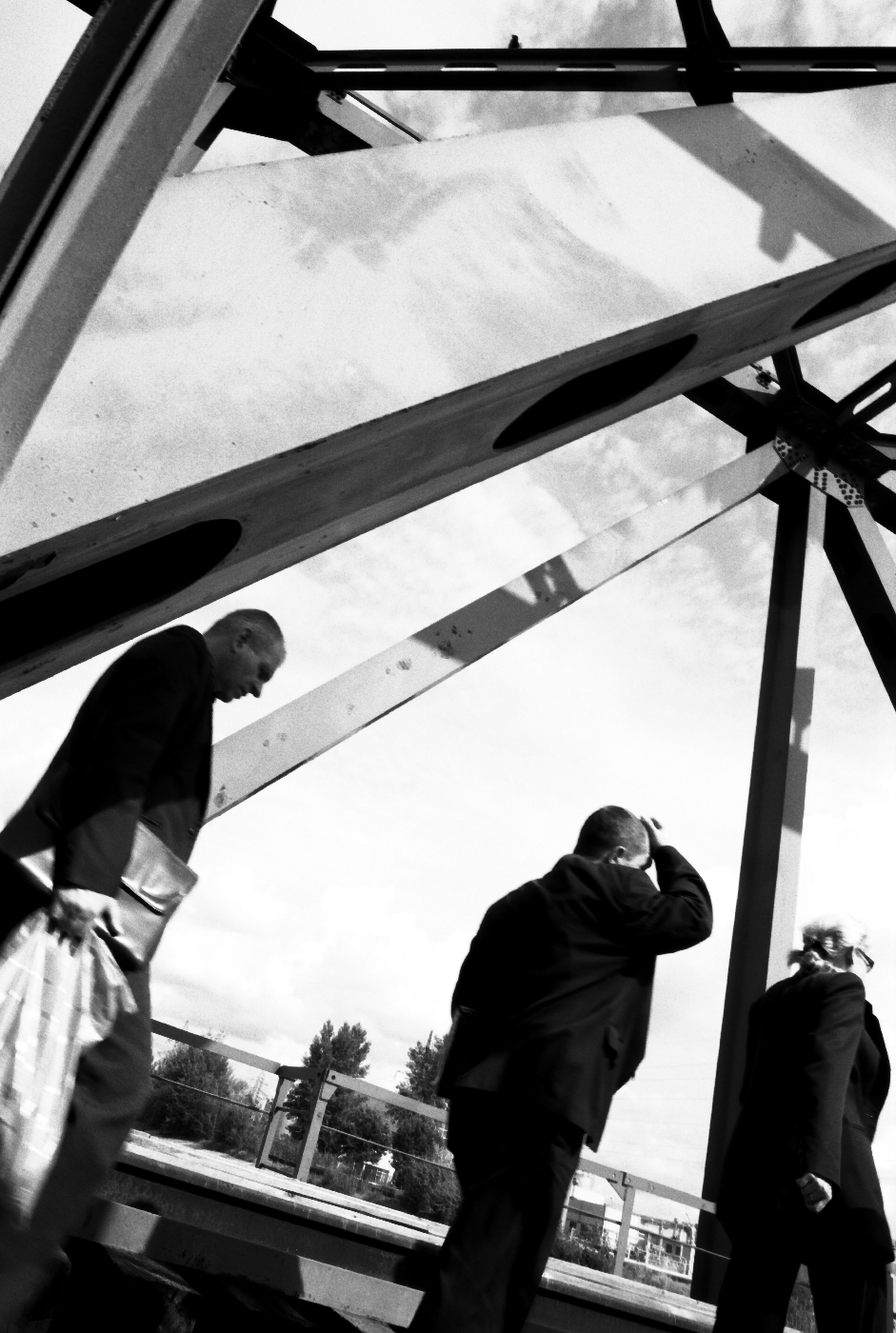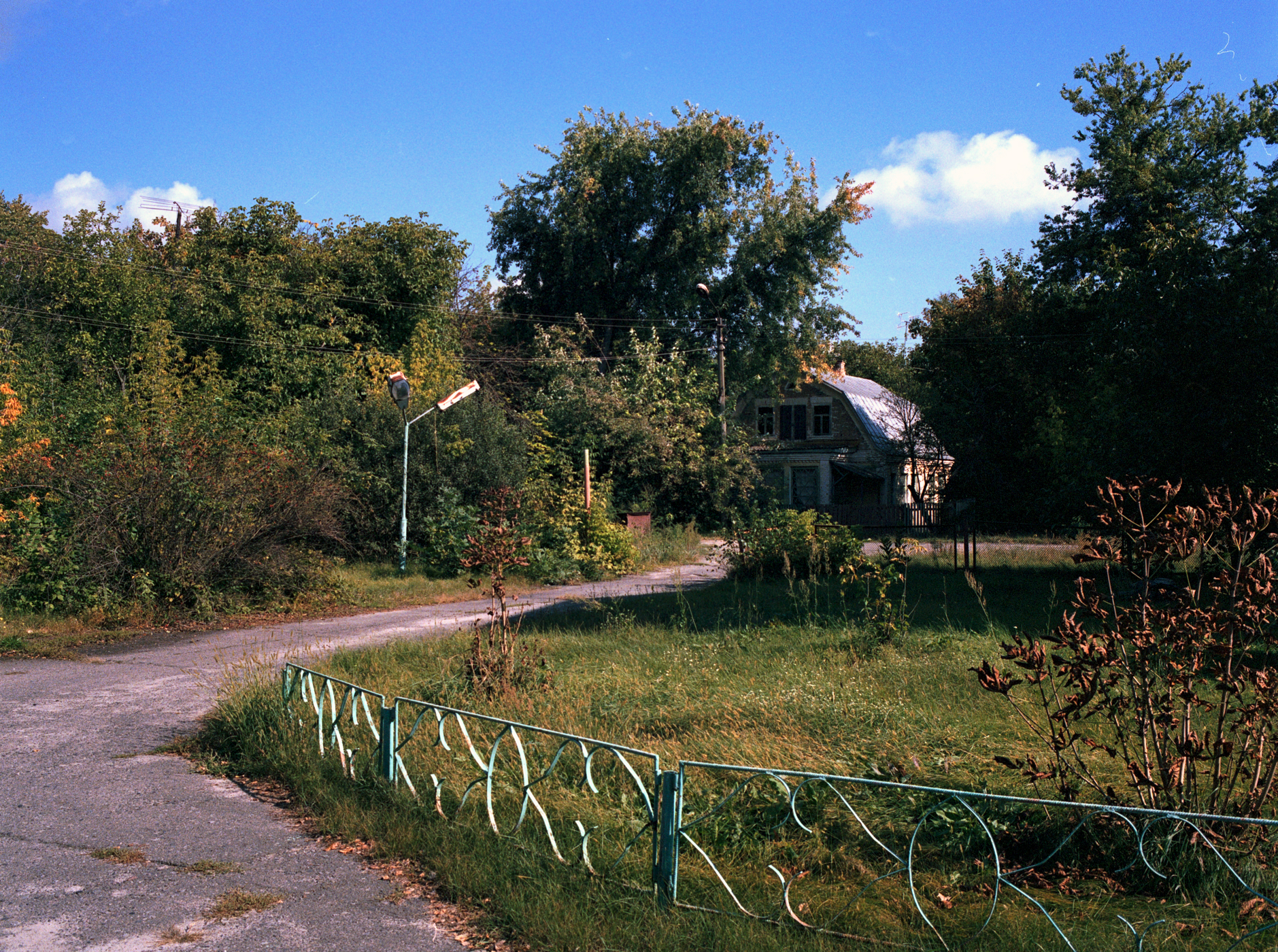Exclusion Zone
'A 10 km off-limits zone around Chernobyl reactor No. 4, simply referred to as THE ZONE.'
the exclusion zone
The Zone
This photo was taken at Ground Zero in front of reactor No. 4, the start of this photo documentary on the children of Chernobyl. The explosion that took place on the 26th of April, 1986 damaged reactor No. 4 severely and caused a radioactive catastrophe of unthinkable dimension. The blast also basically destroyed reactors No. 5 and 6 who had nearly reached completion.
The Exclusion Zone spans a 10km radius around the reactor with radiation doses varying from 200 to 10.000 mSv. (The reading on the dosimeter in the photograph indicated 374 millisieverts.) Zone 2 and 3 make up a 30 km radius from Ground Zero with lower radiation levels.
There are still about 4.000 people working in and around the nuclear power plant. They are on rotating schedules, they work for two weeks and get two weeks off in return.
the exclusion zone
T he NPP Administration Builing inside The Zone. The Prometheus monument serves as a haunting memory of the accident. On some days, workers of the NPP spend their lunch break feeding the gigantic catfish living in the cooling pond waters. An old iron bridge connects the Administration Building to the cooling towers for reactors 5 and 6.
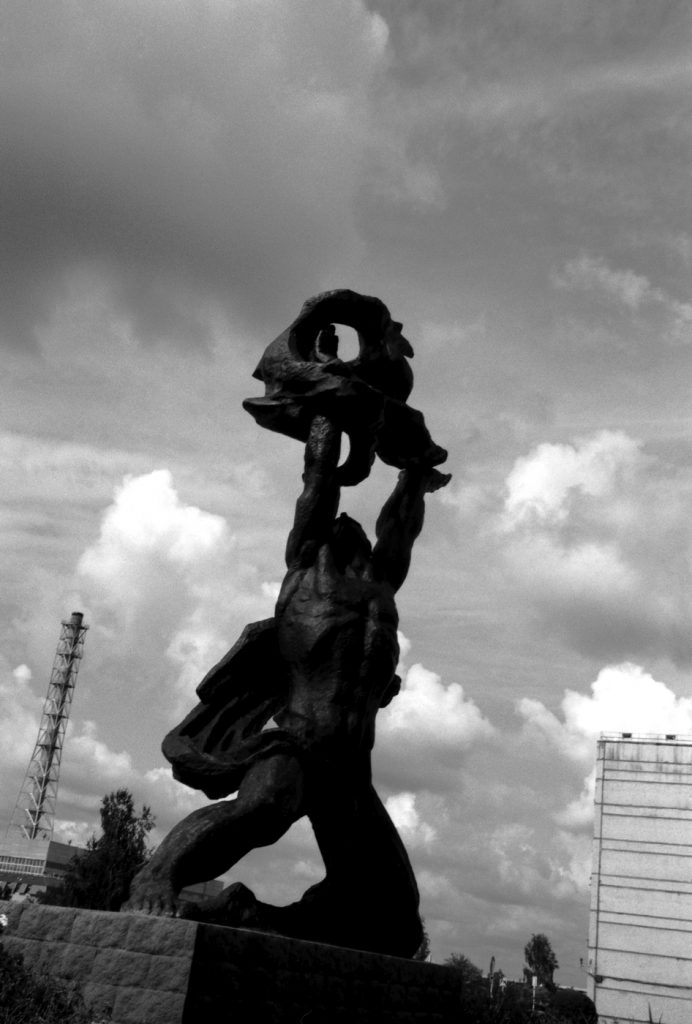
‘At 1.24 am on 26 April 1986 Chernobyl’s Unit 4 reactor exploded after staff disabled safety systems and performed an ill-advised experiment to check – ironically enough – the reactor’s safety.’
Mark Lynas
the exclusion zone
Lunch is served
On our second visit to the Forbidden Zone we were treated to lunch at the Chernobyl NPP Commissary. The meal consisted of potatoes, mushrooms, leaks, and above all, fish. When I inquired as to which waters the fish hailed from the answer was: local. Pretty much all the food that was served stemmed from the contaminated soil or water. But this was only half as bad a surprise as the meal that awaited us the next day during our visit to zones 2 and 3.

